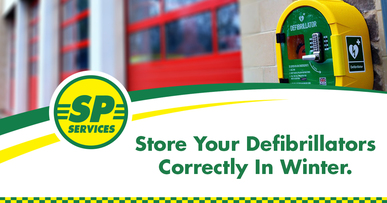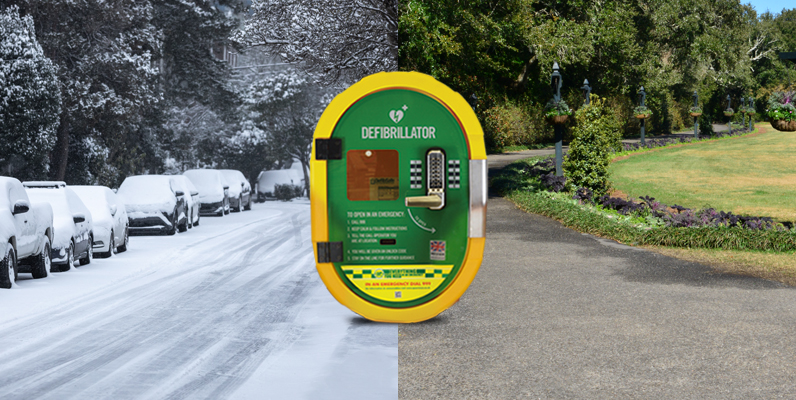-
FREE delivery on UK mainland WEB orders over £150 (ex VAT)!
- Rated Excellent
- Latest Product Updates
FREE delivery on UK mainland WEB orders over £150 (ex VAT)!
19 February 2020

As we enter the winter months it is critical that businesses and individuals store their AEDs appropriately. Even if an AED has received all of the relevant updates, defibrillators and their accessories can be badly affected by the weather and other environmental conditions.
Professionals have a strict care regime to make sure that their equipment is always functioning at its best but with more and more businesses and communities investing in defibrillators, this level of maintenance can sometimes, unfortunately be overlooked. Therefore, the decisions made in regards to AED storage in winter can have an impact on the rescue-readiness of the machine.
It is crucial to read on to ensure that your device is always ready to save a life...
Each AED manufacturer lists an operating temperature range and standby temperature range on the AED’s technical data sheet or operator’s manual. Operating temperature refers to the range in which the AED will perform in a rescue situation and is normally listed at 0° to 50°C for most units. In order to maximize the life of AED pads and batteries, the AED unit should not be stored in temperatures that exceed the specified recommendations, which can vary by manufacturer.
We urge people to read this information and act upon the advice provided and we advise that during the winter months AEDs are stored in a heated outdoor cabinet.

Based on this information, we know that weather conditions can be lower or higher than those stated on the operating temperature range information. With most public access defibrillators being stored outside to make them accessible any time of day in the event of emergency, it is important that if you choose to store your AED outside make sure that you invest in an appropriate cabinet for your device that will shelter it from the cold and heat.
Whilst the shelf life of batteries and electrode pads are between three and five years sub–zero temperatures can impact battery life and functionality and they can become dangerous. The weather can drain your battery or freeze the water-based gel found in the pads. Direct sunlight, for example, could raise the temperature in a glass-fronted storage cabinet above 65°C, the point at which batteries can leak, causes a fire or even explode.
For AEDs stored in vehicles, make sure to routinely check the unit for readiness. If the AED is chirping or displaying a service needed status indicator, take the unit indoors. Once it has a chance to warm up, if it’s still beeping, contact the manufacturer or reseller for further instruction.
If you’d like to find out more about how we can help you keep your defibrillator in peak working condition at this time of year, then please get in touch by emailing sales@spservices.co.uk or sales@spservices.ie
Or, you can view our full range of storage cabinets here.
Back to news
